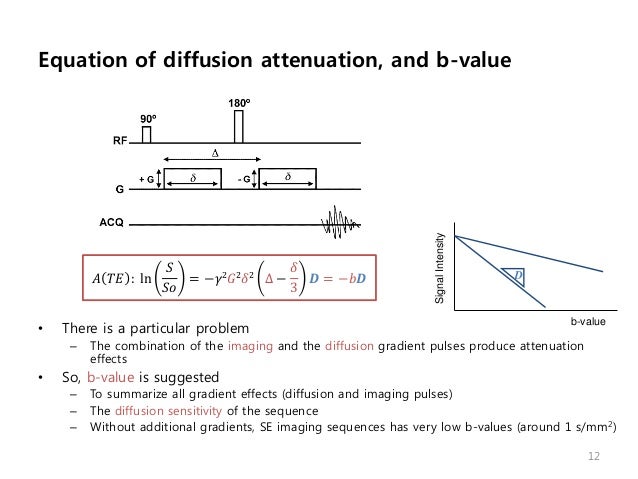
Major technical advances in diffusion MRI have enabled superior data fidelity, reduced image acquisition time and an improved signal-to-noise ratio (SNR). However, this method is prone to artefacts because of susceptibility changes at tissue interfaces and has limited spatial resolution. EPI is able to capture an entire image in a very short time. Common pitfalls will also be addressed.Įcho-planar imaging (EPI) is the method of choice for clinical diffusion-weighted imaging with MRI because of its low sensitivity to the motion-induced phase errors that occur during diffusion sensitisation of the MR signal. We aim to review the main clinical uses of DWI, focusing on the physiological mechanisms that lead to diffusion abnormalities. DTI allows tractography for surgical planning in brain tumours and other advanced techniques such as intravoxel incoherent motion (IVIM) and kurtosis, which provide information about the complexity of tissues and their different compartments (intravascular, intracellular and extracellular). There have been several technical improvements in DWI, leading to reduced acquisition time and artefacts and enabling the development of diffusion tensor imaging (DTI) as a tool for assessing white matter. DWI provides useful information, increasing the sensitivity of MRI as a diagnostic tool, narrowing the differential diagnosis, providing prognostic information, aiding the treatment planning and evaluating response to treatment. Diffusion abnormalities represent alterations in the random movement of water molecules in tissues, revealing their microarchitecture, and occur in many neurological conditions. DWI and DTI derived parameters can be used as biomarkers in different pathologies.ĭiffusion-weighted imaging (DWI) has revolutionised stroke imaging since its introduction in the mid-1980s, but it has also become a pillar of current neuroimaging.In diffusion imaging, ADC is inversely proportional to tumour cellularity.DWI helps in the detection of intramural haematomas (arterial dissection).DWI is the most sensitive sequence in stroke diagnosis and provides information about prognosis.DWI includes EPI, TSE, RESOLVE or EPI combined with reduced volume excitation.Recently, there have been several technical improvements in DWI, leading to reduced acquisition time and artefacts and enabling the development of diffusion tensor imaging (DTI) as a tool for assessing white matter. DWI provides useful information, increasing the sensitivity of MRI as a diagnostic tool, narrowing the differential diagnosis, providing prognostic information, aiding in treatment planning and evaluating response to treatment.

Diffusion-weighted imaging (DWI) has revolutionised stroke imaging since its introduction in the mid-1980s, and it has also become a pillar of current neuroimaging.


 0 kommentar(er)
0 kommentar(er)
